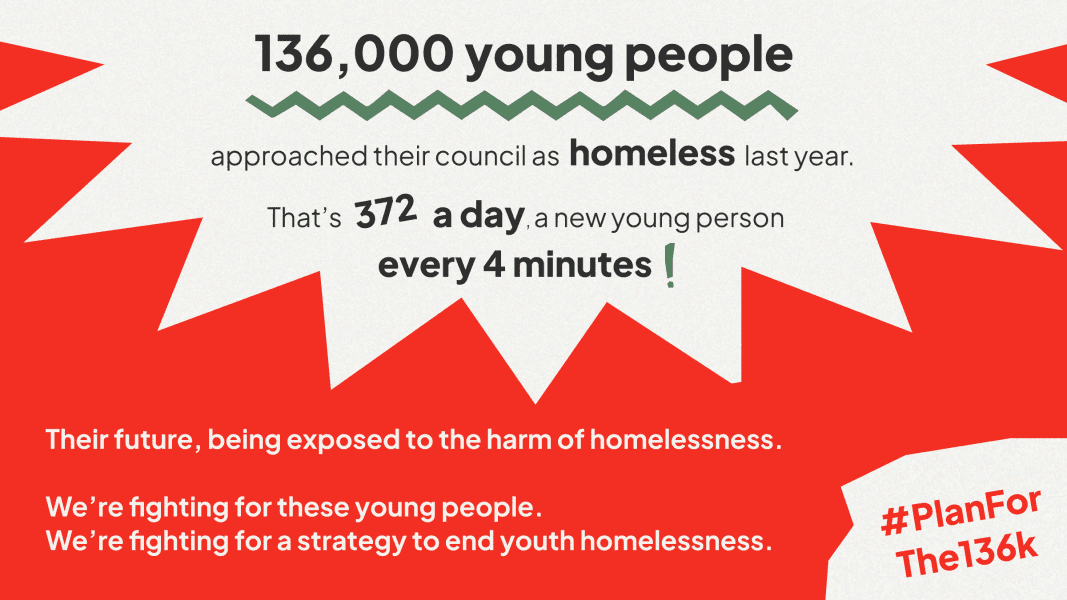Currently, there is no national plan for ending youth homelessness. So as a coalition of over 100 youth focused organisations, we are calling on political parties to adopt our strategy. With 15,344 signatures gained on our recent parliamentary petition, we are pushing towards collective action.
The problem
In 2021-22, according to Centrepoint estimates, 129,000 16–25-year-olds presented at their local authority as homeless or at risk of homelessness. Since the campaign was launched, this number has increased by 5%, to almost 136,000 in 2022-23. Many young people experiencing homelessness remain hidden, not showing up in the data, so this figure could easily be double and with COVID and the cost-of-living crisis, it’s getting worse. New Horizon Youth Centre, a day centre supporting young people who are homeless or at risk in London, has seen a 12% increase in young people using our services over the past two years. Covid changed everything, but certain truths remain; far too many young people in the UK find themselves unhoused, unsupported and unsafe.
Why?
Young people are not adequately supported during an already challenging transition to adulthood. They may be pushed into homelessness due to violence, abuse and trauma at home or in the care or criminal justice system. Required to be socially and financially independent for the first time, they face lower pay and minimum wage jobs in the labour markets, increasing their risk of poverty. With young people disproportionately affected by both the pandemic and the cost-of-living crisis, action is required now to avoid long term societal repercussion.
From speaking to the charity partners that we work with at LandAid, they are facing the same unique barriers:
1. They are often invisible to authorities and services,
2. They can’t evidence their homelessness,
3. Young people are often not seen as priority need or taken seriously or believed when presenting at councils,
4. They don’t know what support is available beyond the family home,
5. They are subject to age-related discrimination in terms of pay,
6. Young people receive reduced welfare benefit entitlements,
7. There is a lack of supply of suitable, affordable and youth appropriate housing,
8. They face systemic racism and discrimination of minoritised communities,
9. They face higher risk of exploitation by not having their needs met.
The knock-on impact
Centrepoint reports only 37% of those young people who presented as homeless or at risk at their local authority in 2021/22 had a positive outcome, meaning their homelessness was successfully prevented or relieved, or they were housed under the main housing duty. The negative impact on the health, education and employment prospects of young people without a home cannot be denied.
Further, data from a questionnaire carried out by DLUHC in 2020 on people that sleep rough found that 54% of people reported experiencing homelessness for the first time when under the age of 25; and 48% experienced rough sleeping for the first time before this age.
We need effective, cross-cutting interventions for young people at risk of homelessness if we are to prevent entrenchment. Not to mention the opportunity cost of failing to harness the talents of a generation.


